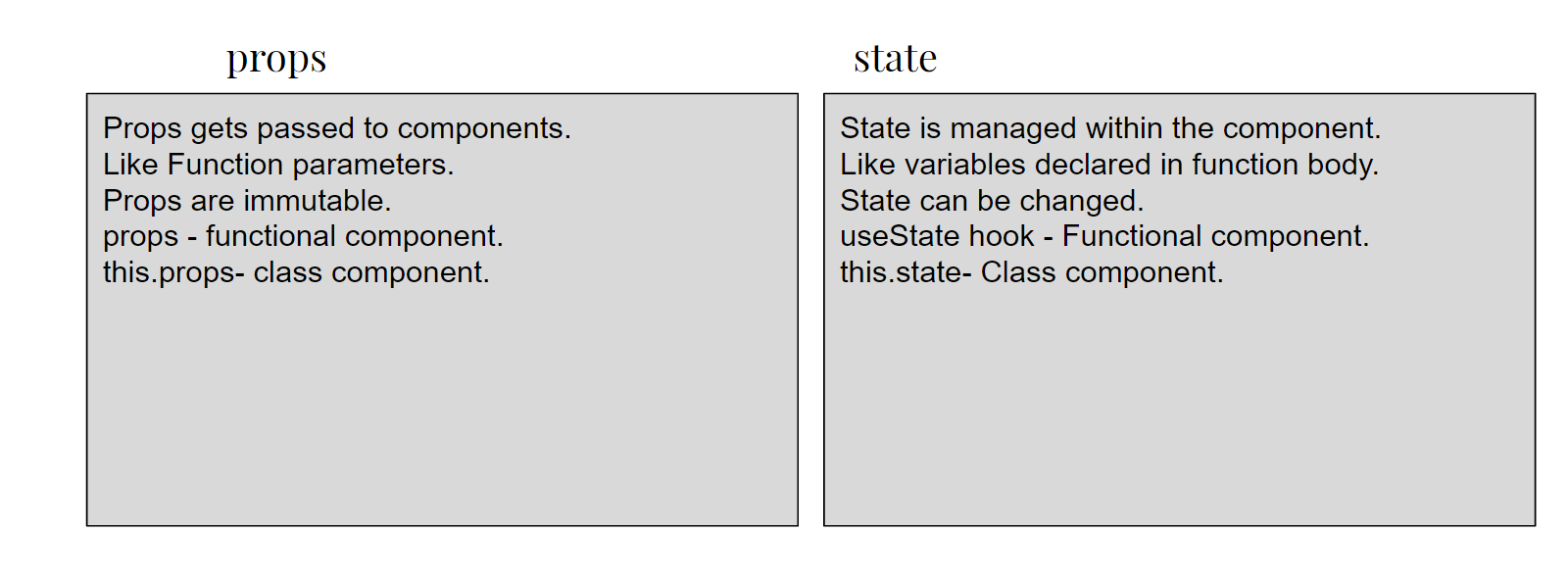
We'd start it in the constructor, save the unsettled Promise in an instance variable, and then await for its completion in the methods that need it. Since performing an asynchronous call to its completion in the constructor is not an option, we can still start a call in the constructor. Approach 1 - Start call in constructor, await completion in method

This is a hand selected set of snippets that work the way that you would expect, not just a copy of the documentation. Not everything in React is included here. If this line is added to the constructor, all will work as expected: this. bind () method on it in the constructor for that component. You will typically subclass it and define at least a render () method. These snippets were selected carefully from my own day-to-day React use. The constructor way Since the ‘this’ context of App is the one that handleClick () should be using, we have to use the. There are few approaches to work around this. React Basic Constructor, componentDidMount and Render React.Component is an abstract base class. Therefore it's not possible to perform an asynchronous call to its completion during this process. The constructor in a React component is called before the component is mounted. The concept of a constructor is the same in React. It automatically called during the creation of an object in a class. Since the new-expression returns the newly created object, returning a Promise is not an option. The constructor is a method used to initialize an objects state in a class.

Finally, as the constructor returns, that object becomes the result of the new WebPage("url") expression.
REACT CONSTRUCTOR UPDATE
There you can set initial state in the constructor of the class, but also access and update it with this. The constructor modifies the object setting and initializing variables. React State without a Constructor In React, state is used in a React class component. How a constructor works is, when you call new WebPage("url") the constructor is executed with a fresh new object is set as this. It is used to initialize objects i.e, State in ReactJS. Let's say you have a method bestLaCroixFlavor() which is supposed to return the string 'grapefruit'.} Contract for object constructor prevents returning Promise In ReactJS constructor is used for class components not for the functional component. It's easier to understand this with an example.
REACT CONSTRUCTOR FREE
Instead, you will use expect along with a "matcher" function to assert something about a value. W3Schools offers free online tutorials, references and exercises in all the major languages of the web. The expect function is used every time you want to test a value. It automatically called during the creation of an object in a class.,The best ReactJS Tutorial In 2021 ,Getting started with ReactJS,React Constructor.

toThrowErrorMatchingInlineSnapshot(inlineSnapshot) The constructor is a method used to initialize an objects state in a class. toMatchInlineSnapshot(propertyMatchers?, inlineSnapshot) The worlds leading companies use Formik to build forms and surveys in React and React Native. toMatchSnapshot(propertyMatchers?, hint?) React hooks and components for hassle-free form validation.
toHaveBeenNthCalledWith(nthCall, arg1, arg2. React constructor is a predefined function which will be called automatically on initialization of react component, in this function we can define initial data or states to show for the first time, these data could be loading data before getting all data to make better UI impacts.


 0 kommentar(er)
0 kommentar(er)
